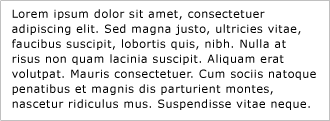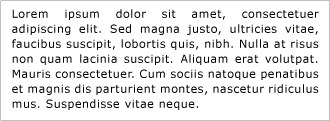EditingCommands.AlignJustify Property
Definition
Important
Some information relates to prerelease product that may be substantially modified before it’s released. Microsoft makes no warranties, express or implied, with respect to the information provided here.
Represents the AlignJustify command, which requests that the current paragraph or a selection of paragraphs be justified.
public:
static property System::Windows::Input::RoutedUICommand ^ AlignJustify { System::Windows::Input::RoutedUICommand ^ get(); };public static System.Windows.Input.RoutedUICommand AlignJustify { get; }static member AlignJustify : System.Windows.Input.RoutedUICommandPublic Shared ReadOnly Property AlignJustify As RoutedUICommandProperty Value
The requested command. The default key gesture for this command is Ctrl+J.
Examples
The following example demonstrates how to invoke an editing command on an object that supports the command.
For this example, a RichTextBox serves as the command target. Note that RichTextBox implements the IInputElement interface (inherited from FrameworkElement), and that it includes native support for many editing commands.
The first argument for the Execute method is a command parameter. Most editing commands ignore the command parameter; in general, this parameter should be null for editing commands.
The second argument specifies the object to which the command will be routed. This object must implement the IInputElement interface, and should include a handler for the specified command. Generally, a command is ignored when invoked on an object that does not handle the command.
RichTextBox rTB = new RichTextBox();
EditingCommands.ToggleInsert.Execute(null, rTB);
Dim rTB As New RichTextBox()
EditingCommands.ToggleInsert.Execute(Nothing, rTB)
Remarks
This command operates at the Paragraph level. If this command is invoked on a partial selection of content within a paragraph (including an empty selection where the caret is within a paragraph), the requested effect is applied to the entire paragraph. If this command is invoked on a selection that spans multiple paragraphs, the effect is applied to all the paragraphs in the selection.
When content is justified, the horizontal spacing within each line of content is adjusted so that the justified lines are of equal or near-equal width. Content is typically justified to create smooth edges on the sides of the content.
Because it is often shorter than the rest, the last line in a paragraph may remain unjustified after this command is invoked.
The following figure shows unjustified (left-aligned) content.

The following figure shows the same content after it has been justified.

There is not necessarily an actual implementation that responds to this command on any given object; in many cases the implementation that responds to a command is the responsibility of the application writer.
This command is natively supported by RichTextBox.
XAML Attribute Usage
<object property="AlignJustify"/>
